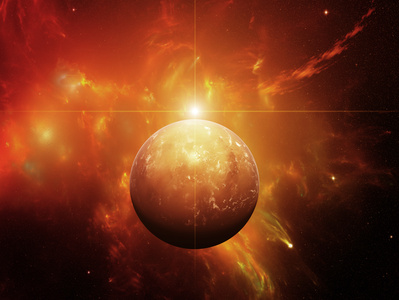Could red dwarf stars be possible sites for earth-like planets? The light received from such a star would be shifted toward the low frequency and of the electromagnetic spectrum. There would be very little visible light. If the star would be one sixteenth the sun’s mass, the planet would have to be revolving around the sun at about the present earth to moon distance. The real problem is the resultant tidal effect because gravity is quadrupled every time the distance is halved. A planet orbiting such a star would have one side permanently locked gravitationally facing the star. This would soon heat up one side to a point when it would boil off the atmosphere. The best possible range of stars for an earth-like planet would be from about 1.4 to about one third of the sun’s mass which would be about F2 to M2 on the spectra scale. On the upper end of the scale, life would have the time to evolve and develop an oxygen atmosphere. On the lower end, the planet could revolve at a safe distance away. These ranges of stars would have to be population two stars. These stars were formed out of the remains of a supernova not directly from the big bang. This is necessary because supernovas create the heavy elements needed to form rocky earth-like planets (Asimov, p117-124).
